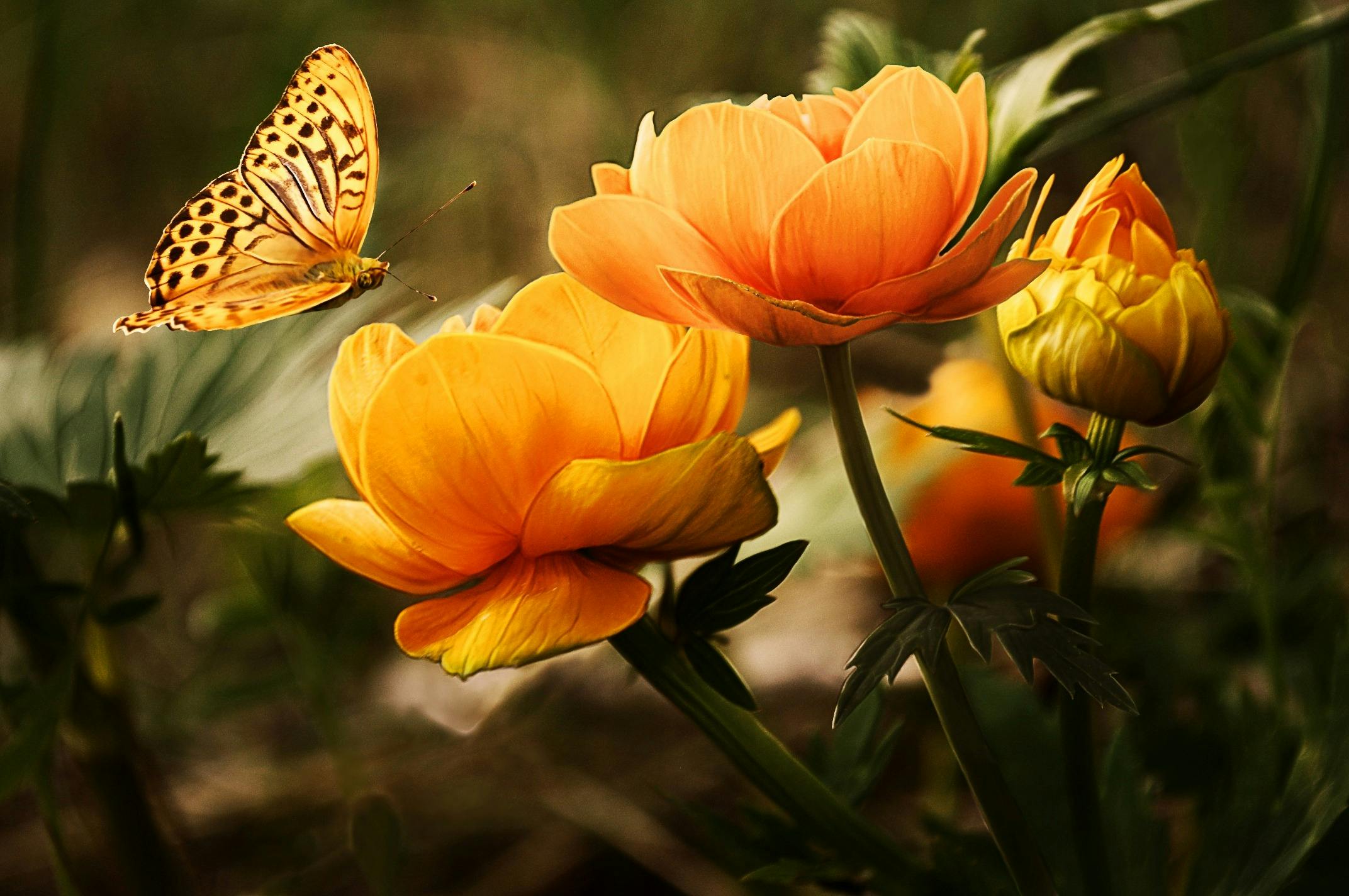Snake plants (Sansevieria trifasciata) are popular houseplants due to their hardiness and ease-of-care. They can survive for weeks without water and thrive in low light conditions, making them a great choice for novice gardeners. Despite their ability to survive under less than ideal conditions, snake plants can still flower and bloom if given the right care. In this guide, you will learn how to make a snake plant bloom with the right soil, light, temperature, humidity, and fertilization.A snake plant blooming has great significance as it is a rare event. The blooms of a snake plant are not only aesthetically pleasing, but they are also a sign of health and vitality. When a snake plant blooms, it indicates that the plant is thriving and has been well cared for. It is also an indication that the environment in which the plant is growing is suitable for its needs. A blooming snake plant can bring joy to the owner and serve as a reminder to take care of your beloved plants.
Ideal Temperature & Humidity For A Snake Plant To Bloom
Snake plants are a great addition to any home or office. They are hardy and easy to care for, and they have a unique look that adds some visual interest to the room. However, for a snake plant to bloom, it needs the right temperature and humidity levels. If the environment is too dry or too wet, it will not bloom. The ideal temperature range for a snake plant is between 70-80 degrees Fahrenheit (21-27 degrees Celsius). The humidity should be kept at around 40-50%. If you can’t find a way to maintain this level of humidity in your home, you can mist the leaves periodically or use a humidifier. Additionally, make sure there is adequate air circulation around the plant so that it doesn’t get too hot or too cold. With the right environment, your snake plant should bloom within a few months!
Sunlight Requirements For A Snake Plant To Bloom
Snake plants, or Sansevieria trifasciata, are popular houseplants due to their ease of care and low light requirements. While the snake plant can survive in low light, it blooms best when exposed to bright, indirect sunlight. Blooming snake plants produce fragrant white flowers. To encourage your snake plant to bloom, place it in a bright spot near a window that receives ample sunlight during the day. The ideal location would be an east facing window that is partially shaded by curtains or blinds to filter the sunlight and protect the plant from direct exposure. If your home does not have access to natural sunlight or if you live in a particularly cloudy climate, you may consider using a grow light to supplement the plant’s exposure to sunlight throughout the day. Snake plants require 8-10 hours of indirect sunlight per day for optimal growth and blooming.
Soil Requirements For A Snake Plant To Bloom
Snake plants, also known as Sansevieria trifasciata, are a popular houseplant known for their low-maintenance and strong air-purifying properties. While snake plants are relatively easy to care for, they can be finicky when it comes to soil requirements. To ensure that your snake plant blooms, it is important to provide it with the right kind of soil.
Snake plants prefer well-draining soil that is rich in organic matter. A good potting mix will typically consist of 1 part compost, 1 part peat moss, and 1 part perlite or sand. The compost provides essential nutrients while the peat moss helps retain moisture and the perlite or sand improves drainage and aeration. You can also add a slow-release fertilizer to your soil mix if desired.
It is important to make sure that your snake plant is not planted in overly wet or soggy soil as this can cause root rot. If you are unsure about the water content of your soil, you can always test it by squeezing a handful of soil in your hand – if it holds its shape without releasing much water, then the water content is just right.
When repotting or transplanting your snake plant, use a container that has plenty of drainage holes to ensure proper drainage and aeration of the roots. You should also consider using a potting mix specifically designed for succulents as these mixes contain ingredients that help retain moisture while still allowing excess water to drain away from the roots.
By providing your snake plant with well-draining soil and proper drainage in its container, you can ensure that your plant has all the necessary conditions to bloom successfully. With proper care and attention, you should be able to enjoy the beauty of a blooming snake plant for years to come!
Fertilizer Requirements for a Snake Plant to Bloom
Snake plants are relatively low-maintenance houseplants and they don’t require excessive fertilizing to stay healthy. However, during their blooming season, they will benefit from an occasional fertilizer boost. A balanced liquid fertilizer with equal parts nitrogen, phosphorus and potassium should be applied every two months during the blooming season. It’s important to use a fertilizer specifically designed for houseplants as opposed to one made for outdoor plants as the concentrations of nutrients can vary greatly. Make sure to dilute the fertilizer according to the instructions on the package before applying it. Additionally, it’s important not to over-fertilize as this can damage the plant’s roots and foliage.
Water Requirements for a Snake Plant to Bloom
Snake plants prefer dry conditions and should only be watered when the soil is very dry in order to avoid overwatering. When watering, use room temperature water and thoroughly saturate the soil until it begins draining out of the bottom of the pot. Allow any excess water to drain away before returning the pot back onto its saucer or tray. During blooming season, water slightly more often than usual but still make sure that you don’t over-water your plant as this can cause root rot and other issues.

Pruning Requirements For A Snake Plant To Bloom
Pruning a snake plant is essential for its overall health and helps it produce more blooms. Pruning should be done carefully, as snake plants have a shallow root system. The best time to prune a snake plant is in the spring or early summer. When pruning your snake plant, you should remove any dead or dying leaves as well as any yellowing leaves. Prune the plant back to a healthy stem or leaf node, making sure not to take too much off at once. It’s important to use sharp gardening shears when pruning so that you don’t damage the plant’s delicate root system.
Repotting Requirements For A Snake Plant To Bloom
Repotting your snake plant is also an important step in its growth and bloom production. You should repot your snake plant every two years or so, depending on how quickly it grows in its current pot. When repotting, you should choose a pot that is slightly larger than the current one and has good drainage holes at the bottom. Make sure the soil you use is well-draining and nutrient rich, as this will help keep your snake plant healthy and promote more blooms. Be sure not to over water your snake plant after repotting as this can lead to root rot.1.
Inadequate Light Exposure
Snake plants (Sansevieria trifasciata) are tough plants that can tolerate a wide range of light levels. However, if the light levels are too low, the plant may not bloom. Snake plants prefer bright, indirect sunlight or artificial light for at least a few hours a day. If the plant is not getting enough light, it won’t be able to produce adequate energy for blooming.
2.
Improper Watering
Snake plants are drought tolerant and do not need frequent watering. Overwatering or underwatering may also cause the plant to fail to bloom. The soil should be allowed to dry out between waterings and only watered when the soil is completely dry. Too much moisture can damage the roots and prevent blooming.
3.
Insufficient Nutrients
Snake plants require essential nutrients such as nitrogen, phosphorus, and potassium for healthy growth and flowering. If there are insufficient nutrients in the soil, it will not be able to produce flowers. Regular fertilization with a balanced fertilizer can help provide necessary nutrients for blooming.
4.
Age
Snake plants usually do not bloom until they reach maturity, which is usually around three years of age in optimal conditions. If your snake plant is younger than this, it might take several more years before you see any blooms.
5.
Temperature Fluctuations
Snake plants prefer warm temperatures between 65-85°F (18-29°C). Temperature fluctuations can prevent blooming as well as cause other problems such as discoloration or yellowing of leaves. Keeping the temperature consistent will help ensure healthy growth and blooming of your snake plant.
Troubleshooting Tips To Help Make Your Snake Plant Blossom
Not only is the snake plant a beautiful addition to any home, but it’s also one of the most resilient houseplants around. However, even if your snake plant is easy to care for, there may come a time when it starts to struggle. If you’re having trouble keeping your snake plant healthy and vibrant, here are some troubleshooting tips that can help get it back on track.
First and foremost, you want to make sure that you’re watering your snake plant correctly. Overwatering is one of the most common reasons why a snake plant might start to suffer. Your snake plant only needs to be watered once every two weeks or so; during the winter months when growth slows down, you can reduce watering frequency even further.
Next, take a look at the soil that your snake plant is planted in. If it’s too dense or not draining quickly enough, then your snake plant won’t be getting all of the oxygen and moisture that it needs for healthy growth. Consider re-potting your snake plant in a soil mix that drains quickly and has plenty of air pockets for oxygenation – this will help keep your snake plant happy and healthy.
Finally, check the light levels where you have placed your snake plant. Ideally, you should find a spot that gets bright indirect light – anything too dark or too bright can cause stress in the form of wilting or yellowing leaves. Additionally, make sure that temperatures in its vicinity stay between 65-85°F (18-29°C) – anything outside of this range could also be causing problems for your beloved houseplant!

Conclusion
A snake plant is a great addition to any home and can bloom with proper care. The key to getting your snake plant to bloom is providing it with plenty of bright, indirect sunlight, regular watering, well-draining soil, and good air circulation. You should also fertilize the soil occasionally to give your snake plant the nutrients it needs to grow and bloom properly. Finally, be sure to prune the plant regularly and repot it when needed.
With these tips in mind, you’ll have your snake plant blooming in no time! So don’t hesitate and start caring for your snake plant today – you won’t regret it!

